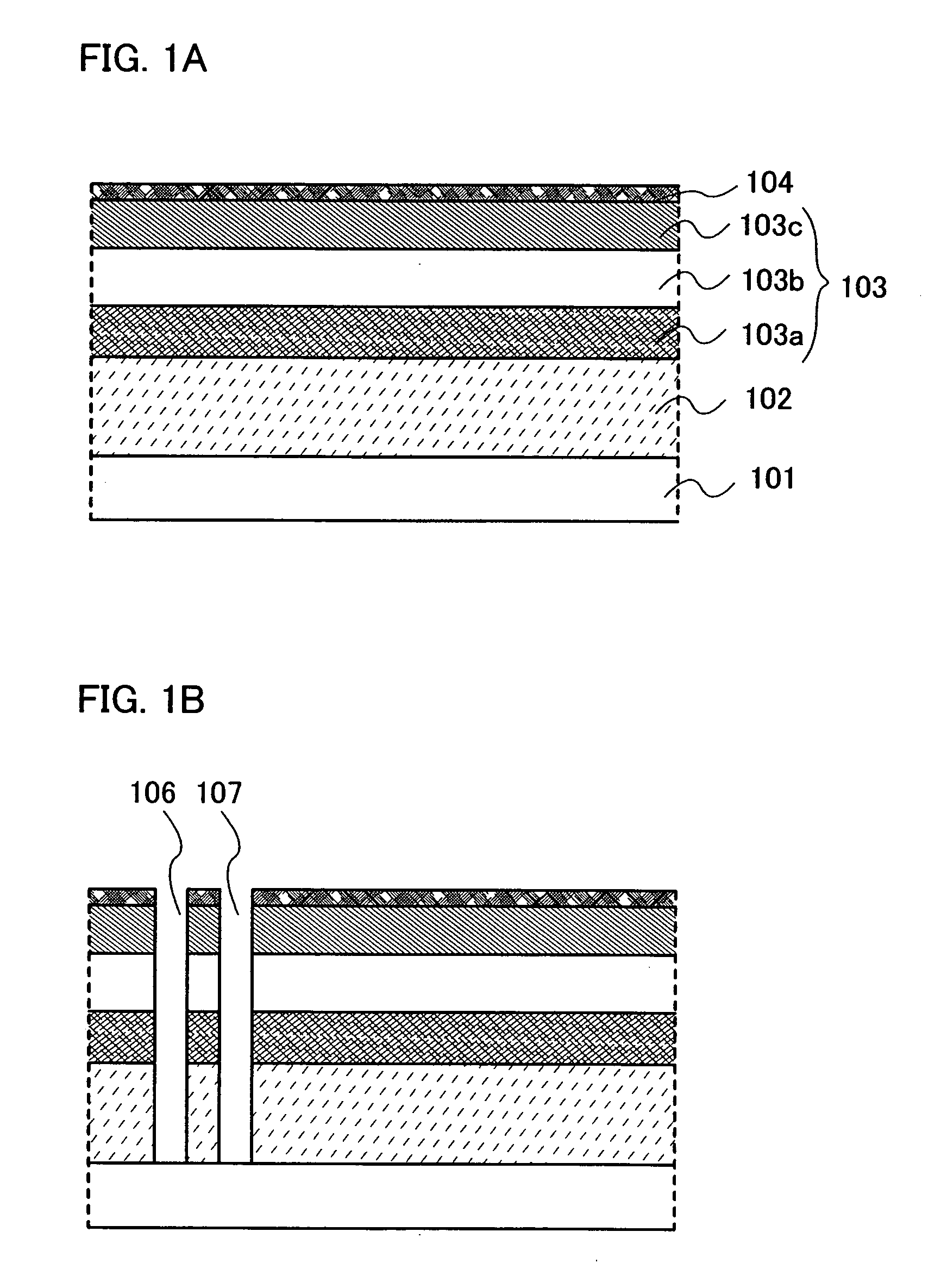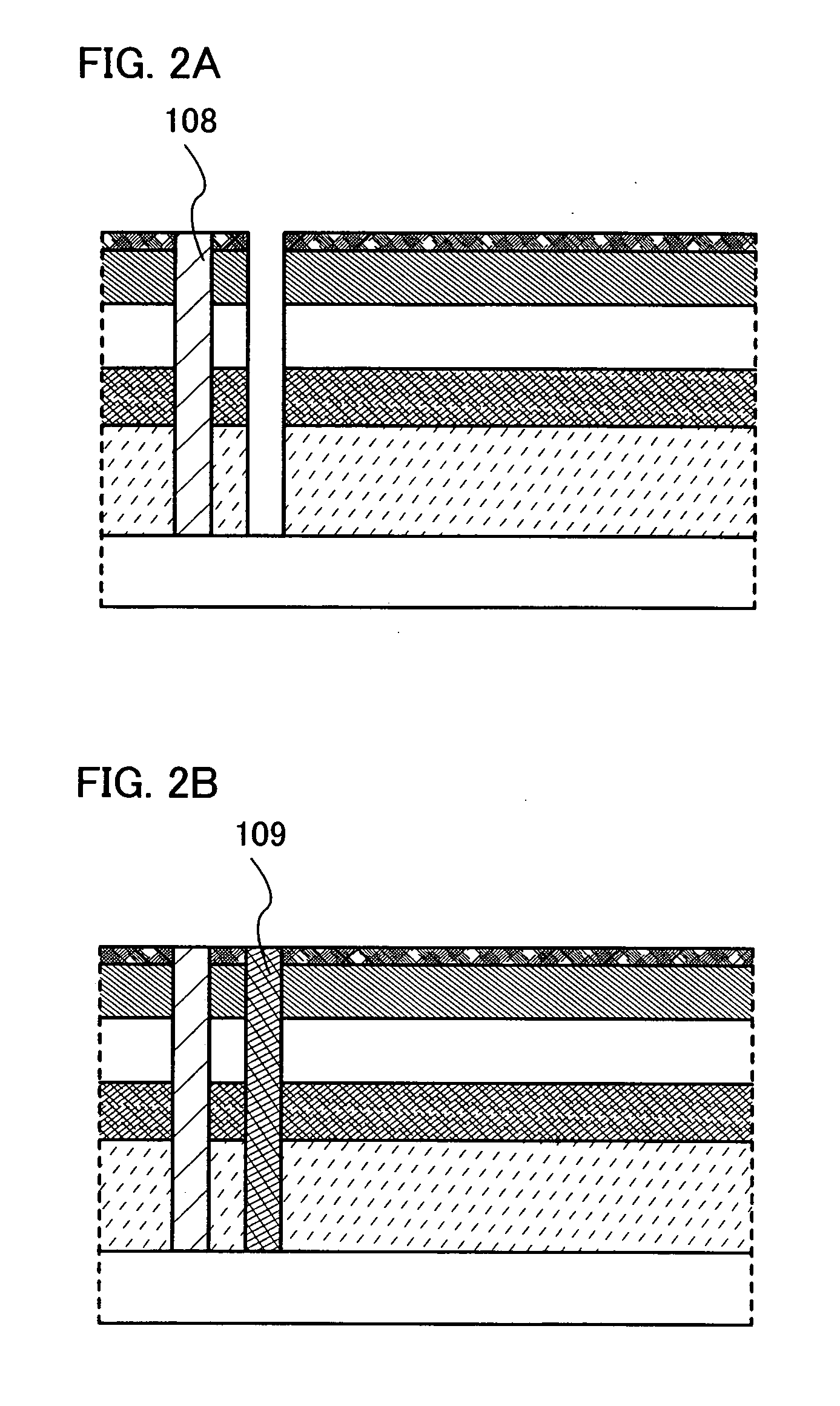Solar cell and semiconductor device, and manufacturing method thereof
a technology of solar cells and semiconductors, applied in sustainable manufacturing/processing, instruments, horology, etc., can solve problems such as easy cracks, and achieve the effect of improving throughput and reducing the size and weight of solar cells
- Summary
- Abstract
- Description
- Claims
- Application Information
AI Technical Summary
Benefits of technology
Problems solved by technology
Method used
Image
Examples
embodiment 1
[0046] This embodiment is described with reference to FIGS. 4A to 4C, 5, and 6. In this embodiment, a method for manufacturing an integrated solar cell in which an organic resin material is used for a substrate and a plurality of unit cells is connected in series on one substrate is described.
[0047] In FIG. 4A, a translucent organic resin material such as polyethylene terephthalate (PET), polyethylene naphthalate (PEN), or polyethersulfone (PES) is used for a substrate 501. Of course, commercially available soda-lime glass, alkali-free glass, or a stainless substrate can also be used.
[0048] A sheet-like substrate of a suitable size may be used as the substrate 501. When manufacturing a solar cell according to this embodiment by a roll-to-roll method, a rolled substrate may be used. In the case where a roll-to-roll method is applied, an organic resin film substrate having a thickness of 60 to 100 μm is preferably used.
[0049] The solar cell manufactured in this embodiment has such ...
embodiment 2
[0081] In this embodiment, examples of various electrical devices having a solar cell manufactured according to the present invention are described with reference to FIGS. 7, 8A to 8C, and 9.
[0082]FIG. 7 is a top view of a solar cell according to this embodiment seen from a rear electrode side. FIG. 7 shows an example of a wrist watch in which a solar cell placed at the lower side (portion in which a movement of a wrist watch is installed) of a semitranslucent dial. A substrate 601 is an organic resin film having a thickness of 70 μm. Although any of the organic resin materials referred in Embodiment 1 can be applied, a PEN substrate is typically used for the substrate 601. The shape of the substrate 601 is not limited to a circle. An insertion port 607 of a pointer shaft is provided at the center.
[0083] In the solar cell, a transparent electrode layer, a photoelectric conversion layer, a rear electrode layer, and a sealing resin layer are stacked over the substrate 601 sequential...
PUM
 Login to View More
Login to View More Abstract
Description
Claims
Application Information
 Login to View More
Login to View More - R&D
- Intellectual Property
- Life Sciences
- Materials
- Tech Scout
- Unparalleled Data Quality
- Higher Quality Content
- 60% Fewer Hallucinations
Browse by: Latest US Patents, China's latest patents, Technical Efficacy Thesaurus, Application Domain, Technology Topic, Popular Technical Reports.
© 2025 PatSnap. All rights reserved.Legal|Privacy policy|Modern Slavery Act Transparency Statement|Sitemap|About US| Contact US: help@patsnap.com



